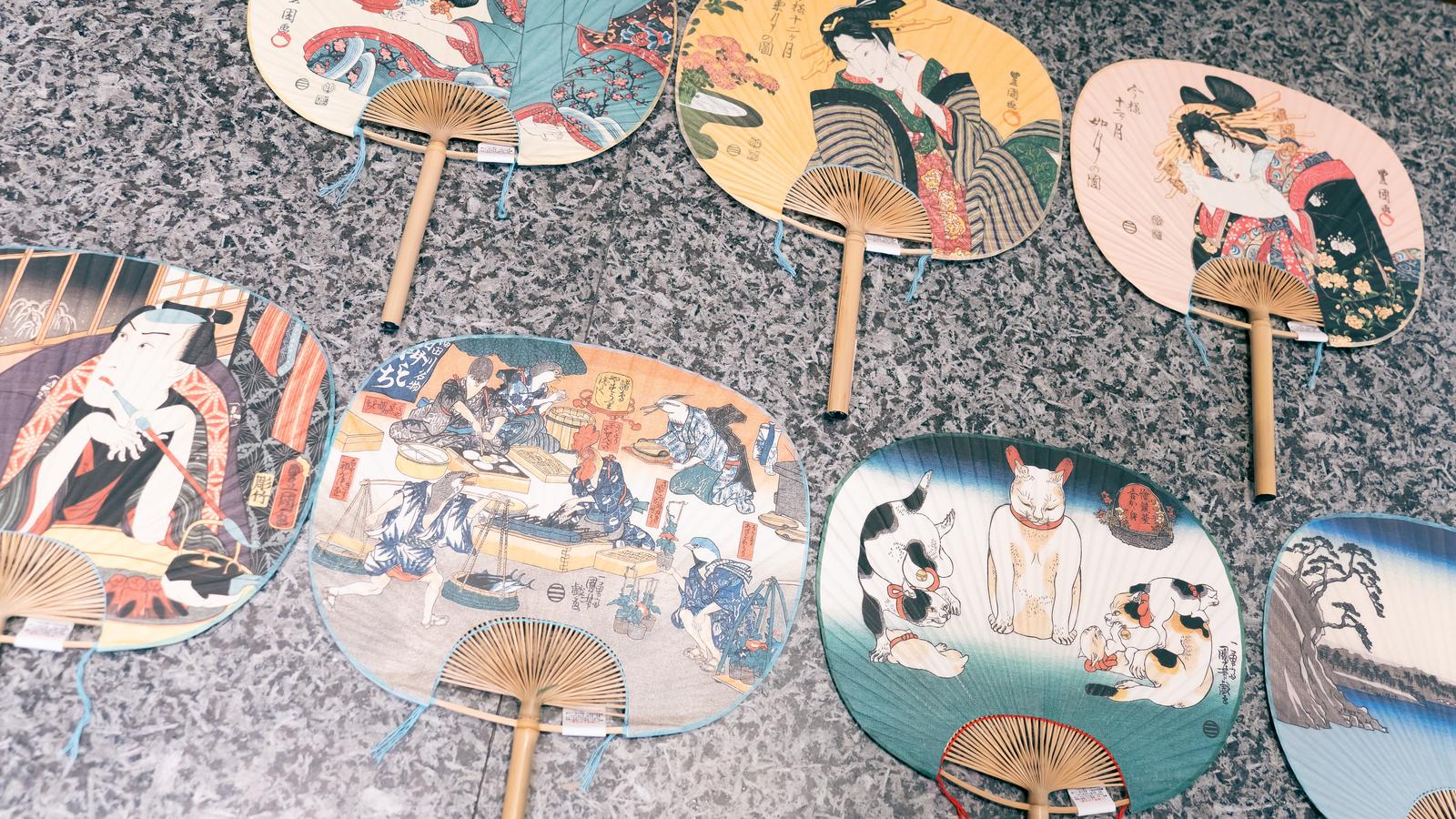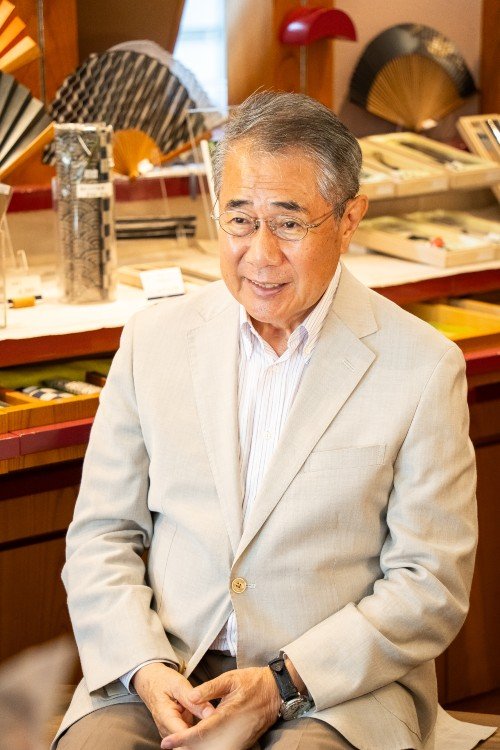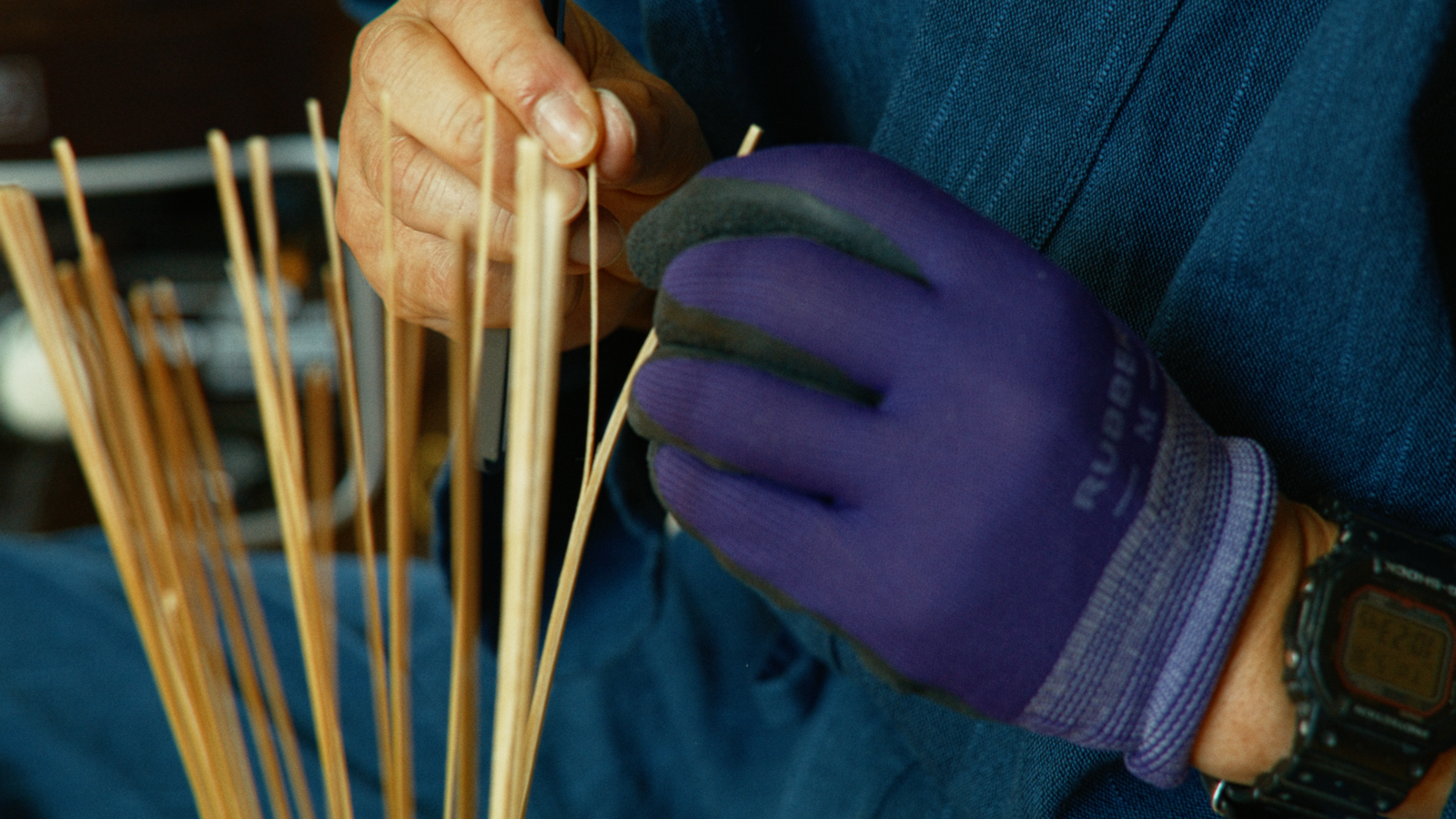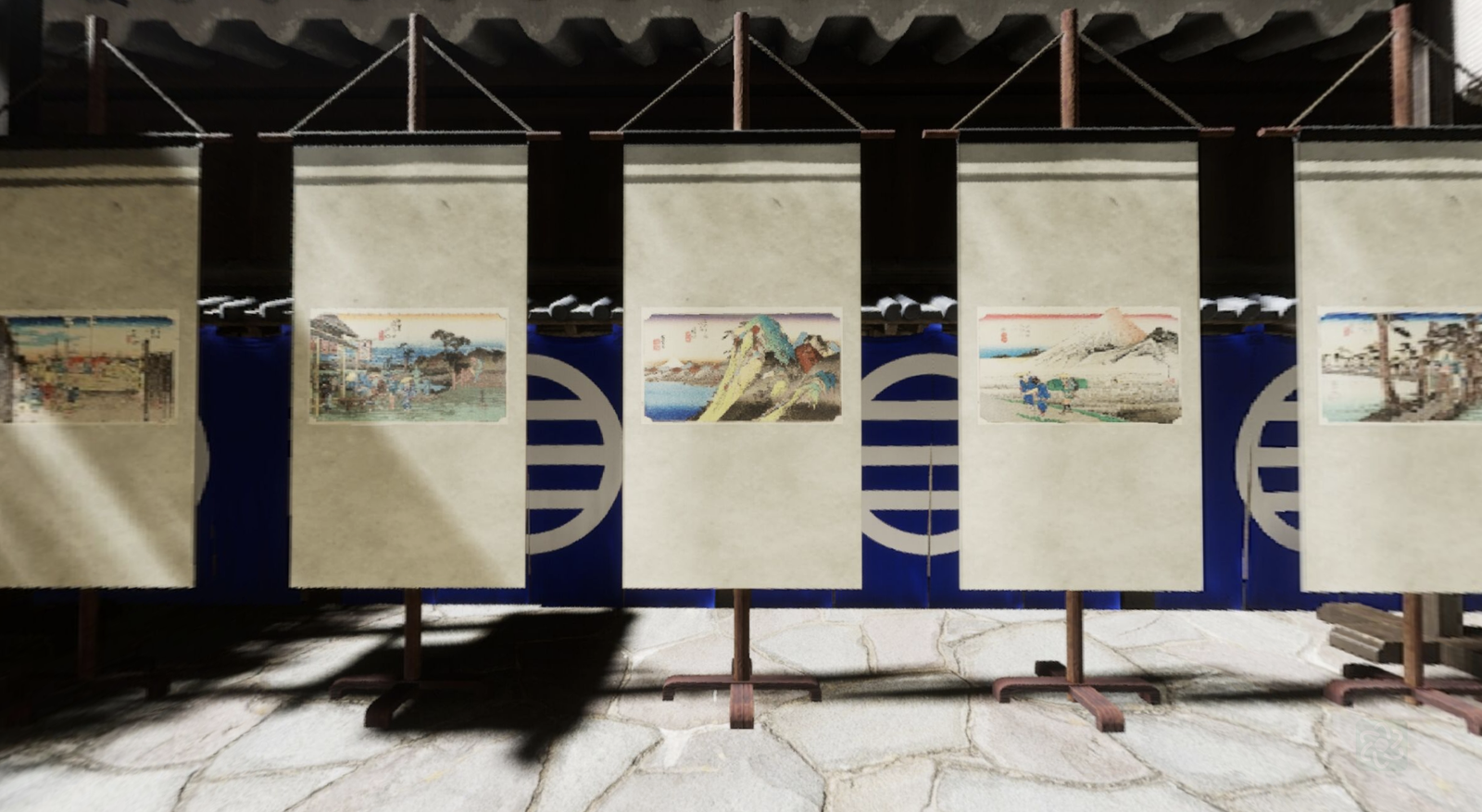Edo Aesthetics as Conveyed by Edo Uchiwa

Exquisite Pieces Made Using Edo Period Techniques
Even now, Tokyo is home to about 3,000 companies with artisans carrying on traditional crafts passed down from the Edo period. Through the Edo Tokyo Kirari Project, the Tokyo Metropolitan Government has offered support to traditional companies making efforts to combine their traditional ways with modern lifestyles. The concept? "Old meets new." Ibasen, a long-established manufacturer of uchiwa (traditional fans) and sensu (traditional folding fans), founded in 1590, was selected for the project in 2022 due to their use of digital technology to offer NFT ukiyo-e (Japanese woodblock prints) to an international audience. Their Edo Uchiwa are made using techniques passed down over 300 years, which has made them popular with tourists.
"It was in the mid-Edo period, around the 1700s, that our ancestors started making these fans," says Yoshida Nobuo, the 14th head of Ibasen. Upon Tokugawa Ieyasu's move to Edo, the first-generation head of Ibasen, Ibaya Kanzaemon, moved to Edo from Iba-mura in the Enshu region (near the present-day west area of Shizuoka Prefecture, located roughly in the center of Japan), to serve as a contractor for Ieyasu. Following Ieyasu's establishment of the Edo shogunate in 1603, Kanzaemon had started a shop selling materials for washi (traditional Japanese paper), eventually becoming an official merchant to the shogunate.

"After that, in the 1700s, they started using bamboo and washi to make uchiwa. These uchiwa later became known as the Edo Uchiwa," says Yoshida. A single bamboo is split to shape both the frame and handle for the fan, which is one of the defining characteristics. "The fans aren't just for keeping cool—they are also used in cooking, for instance. As everyday tools, they have to be sold and produced in large quantities, which is why they are made from a single stem of bamboo, to lower costs."

In the late Edo period, advancements in woodblock printing technologies made the mass production of fan patterns possible, allowing fan makers to design uchiwa patterned with ukiyo-e portraits of popular kabuki actors, and more. Ibasen also began to incorporate paintings by famous ukiyo-e artists, and eventually came to serve the Edo shogunate in its capacity as both a fan merchant and ukiyo-e publisher.
Using Technology to Promote Ukiyo-e to International Audiences
As a publisher, Ibasen has put considerable effort into promoting Edo culture, even establishing a museum next to its store in Nihonbashi, Tokyo, in 2012. The museum displays their fans and the woodblocks used for printing, and more. In 2023, they also established the Metaverse Ukiyo-e Museum, through which they sell ukiyo-e that utilize NFT technologies in the metaverse.
"There are many people overseas who are interested in ukiyo-e and Edo culture. I believe that it is our role to protect the aesthetic and traditions of Edo, and convey it to future generations, so we want to incorporate digital technologies even more in the future."

Edo Tokyo Kirari Project
https://en.edotokyokirari.jp/Ibasen
https://www.ibasen.co.jp/enPhotos by Shibuki Ryo
Translation by Amitt




